
The United States is no stranger to severe weather—if you live in the U.S. long enough, you can experience everything ranging from wildfires and fire tornadoes, to flash flooding. This extreme weather is not only dangerous to your well being, but it can also cause thousands of dollars in damage to your home or business. Last year alone, weather and climate disasters caused nearly $97 billion in damages across the country.
Historically, hurricanes have caused the most U.S. weather-related destruction when compared to all other natural disasters. Those who live in hurricane-prone areas need to understand the potential hurricane damage and ensuing costs that these weather events can cause.
Knowing when hurricane season starts and ends can be a step in the right direction to prepare for these extreme weather events, while allowing for adequate time to prepare your home accordingly. But more information regarding the damage they cause each year could prove useful for those homeowners who wish to prepare.
How is Hurricane Damage Quantified?
The cost of hurricane damage is not just determined by the number of buildings or roads that were impacted. To better quantify hurricane damage, the National Oceanic and Atmospheric Administration (NOAA) uses accurate and comprehensive sources—both private and public—data sources like state agencies, insurance offices, and more.
When considering the cost of hurricane damage, the NOAA then takes the information from its sources and assesses the loss. Adam Smith, the lead scientist for NOAA’s Billion-dollar Weather and Climate Disasters team, attributes the direct costs of hurricane events to include:
- Physical damage to residential, commercial, and government or municipal buildings
- Material assets within a building
- Time element losses like business interruption
- Vehicles and boats
- Offshore energy platforms
- Public infrastructures like roads, bridges, and buildings
- Agricultural assets like crops, livestock, and timber
Once the damage is assessed, the NOAA categorizes and counts significant weather events as “billion-dollar disasters.” While a threshold of $1 billion is an arbitrary threshold, these billion-dollar disaster events represent greater than 80 percent of U.S. weather and climate event damage direct costs. Additionally, NOAA categorizes these events based on the Consumer Price Index in 2021 to account for inflation in the 21st century.
Billion-dollar disasters have increased in frequency over time for several reasons, with climate warming being a commonly cited reason why this is the case. Per GFDL research, greenhouse-gas-induced warming may lead to an increase in global risk for Category 5 storms, which could spell trouble for those in areas that are prone to hurricanes.
Costliest Hurricane Seasons Since 2000
Now that we know how hurricane damage is quantified, we can count down the costliest hurricane season in U.S. history as of June 2021. The five costliest hurricanes in United States history are all within the last 20 years, with many major hurricanes occurring in the last 10 years. Due to extreme weather becoming increasingly common, the U.S. will likely have to deal with longer and stronger hurricane seasons in the years to come.
Each year below highlights the annual cost of total damage along with the total U.S. death toll for that year. Notable storms are highlighted for visibility, providing insight into some of the most damaging hurricanes of that year. The cost numbers below are updated every 3 months by NOAA to account for the increase of inflation.
#10 - 2016
$11.1 billion in damage, responsible for 49 deaths
- 2016 had seven hurricanes, four of which were major hurricanes.

Hurricane Matthew
2016 saw 15-named storms, with hurricane season starting in January—much earlier than the average start of hurricane season in June. The costliest and deadliest hurricane of 2016 was Hurricane Matthew, causing extreme damage in the U.S. and several islands in the Bahamas.
#9 - 2001
$12.8 billion in damage, responsible for 24 deaths
- 2001 had a total of nine hurricanes with four major hurricanes (Category 3 or higher).
Tropical Storm Allison
The most damaging storm in 2001 was Tropical Storm Allison, causing major flooding in Texas. This event led President George W. Bush to declare the areas that Allison had hit “disaster areas,” as it displaced over 30,000 people and flooded over 70,000 houses.
#8 - 2011
$19.1 billion in damage, responsible for 66 deaths
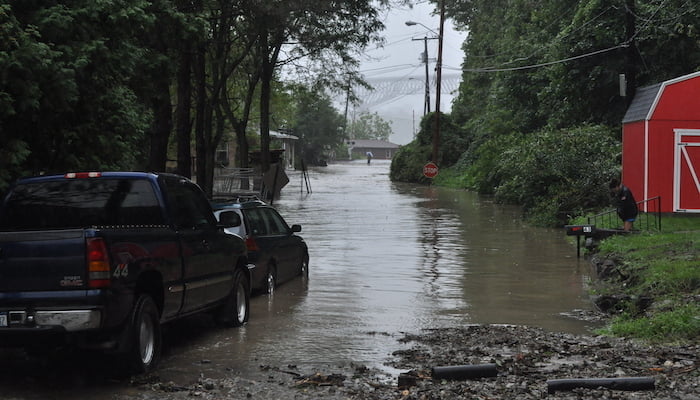
Hurricane Irene
2011 saw 19 tropical storms, though many were weak and did not form into hurricanes. Four of those storms became major hurricanes: Irene, Katia, Ophelia, and Rita. Hurricane Irene passed through the Bahamas and made landfall in North Carolina before dissipating near the New Hampshire–Vermont state line. Much of the costly damage occurred due to inland flooding. Irene also caused New York city to issue an unprecedented evacuation warning, due to fears of coastal flooding from the storm surge.
#7 - 2020
$41.2 billion in damage, responsible for 86 deaths
- For the second time in history, the Greek alphabet had to be used to name the 2020 hurricanes, extending through the ninth Greek name, Iota.
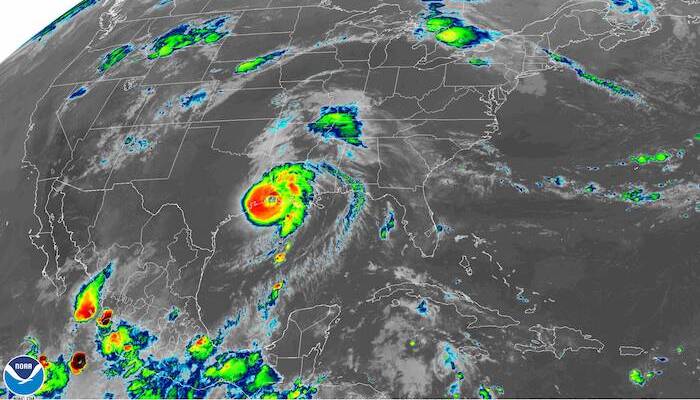
Hurricane Laura
One of the most recent hurricanes is Category 4 Hurricane Laura. The storm made landfall in Louisiana in late August of 2020. It was the strongest hurricane to hit Louisiana for over 150 years and affected Texas, Mississippi, and Arkansas. Hurricane Laura caused power outages, fallen trees, and flooding, contributing to the 10 deaths that occurred.
Hurricane Sally
Hurricane Sally also joined Laura in 2020 and caused extreme flood and wind damage throughout Alabama, Florida, and Georgia. Sally made landfall near Gulf Shores, Alabama, as a Category 2 hurricane and left a path of destruction in its wake. The storm flooded neighborhoods, submerged homes, and left tens of thousands of residents without power.
#6 - 2008
$46.6 billion in damage, responsible for 168 deaths
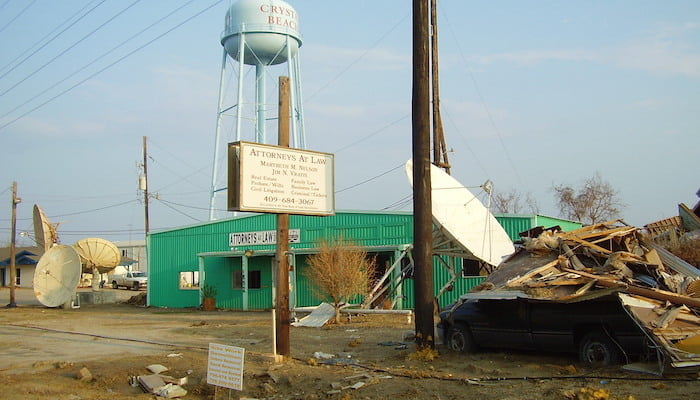
Hurricane Ike
The costliest and deadliest hurricane of the 2008 season was Hurricane Ike. The storm wreaked havoc on Texas in September 2008, making landfall in Galveston on September 13. After hitting Texas with 110 mph sustained winds, Hurricane Ike caused extensive storm surge flooding, wind damage, and rainfall flooding across all of Harris and surrounding counties. 113 people died in this storm, and it caused damage and massive flooding in Texas, Mississippi, and Florida.
#5 - 2018
$51 billion in damage, responsible for 102 deaths
- First Category 5 Hurricane (Michael) to hit the U.S. mainland since 1992.
- 2018 saw the fourth ever Category 5 hurricane to hit the U.S. mainland.

Hurricane Florence
Hurricane Florence, a Category 1 storm of considerable size, dropped nearly 3 feet of rain in North Carolina and 2 feet in South Carolina in September (both are state records). Overall, Florence recorded $25 billion in damage and was responsible for 53 U.S. deaths.
Hurricane Michael
Nearly three weeks later, a powerful Category 5 hurricane, Hurricane Michael, made landfall in Florida, producing maximum sustained winds of over 160 miles per hour and a storm surge that exceeded 15 feet. Overall, Michael did about $26 billion in damage and was responsible for 49 U.S. deaths.
#4 - 2004
$76.3 billion in damage, responsible for 168 deaths
- Four Category 2 or stronger hurricanes struck the U.S. in a 47-day span.
- Each storm produced at least $10 billion in damages and 28 U.S. deaths.
- Hurricane Ivan did the most economic damage in 2004—$29 billion.
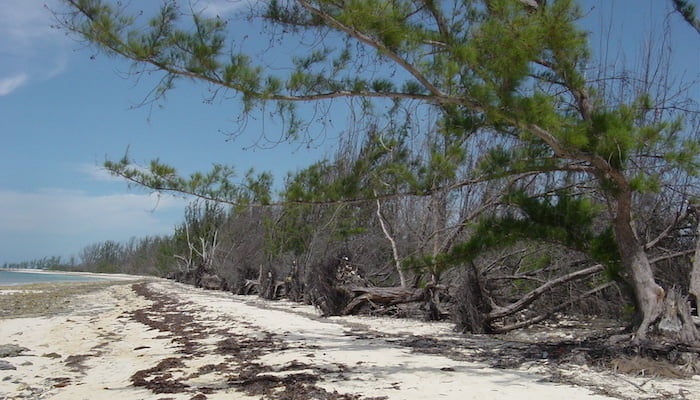
Hurricane Charley
In 2004, Hurricane Charley struck first as a Category 4 hurricane on August 13th. Charley hit the Atlantic Coast and did its primary damage in Florida and both of the Carolinas. Eighty percent of the buildings in the southwest county of Charlotte were destroyed and an 8-foot storm surge occurred in Lee County. All 59 schools in Osceola County were damaged—in the city of about 16,000 residents, 11,000 homes were destroyed.
Hurricane Frances
Hurricane Frances—a Category 2 storm—struck 16 days after Hurricane Charley dissipated. This storm was responsible for 48 deaths and $14 billion in damage. Frances caused significant wind, flood, and storm surge damage in Florida, Georgia, the Carolinas, and New York. There were reported cases of 15 inches of flooding in some areas.
Hurricane Ivan
Just three days after Frances subsided in the United States, a Category 3 storm named Ivan hit the Alabama/Mississippi/Florida Gulf Coast. At one point in time, Ivan held the world record of 32 consecutive six-hour periods at or above Category 4 strength.
Hurricane Jeanne
While Ivan was still causing wind and flood damage up the Atlantic Coast, Hurricane Jeanne—another Category 3 storm—had already begun to form and was doing extensive flood damage in Puerto Rico.
#3 - 2012
$78 billion in damage, responsible for 168 deaths
- There were two notable hurricanes in 2012, Hurricane Isaac and Hurricane Sandy.
- Hurricane Isaac was a Category 1 storm, causing most of the damage in the Caribbean.
- Hurricane Sandy hit U.S. coastal states hard, going as far up the coast as Rhode Island.
- Super-storm Sandy crossed paths with another storm cell and doubled in size, heading up the Atlantic.
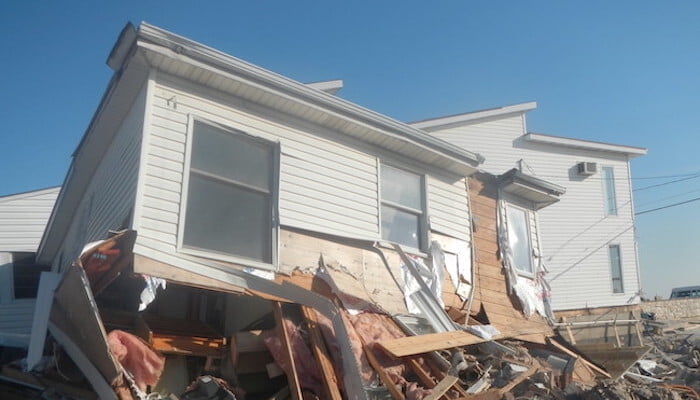
Hurricane Isaac
Prior to Sandy hitting in October, Hurricane Isaac was a Category 1 storm; the slow movement of Isaac resulted in prolonged, strong winds, coastal and flash flooding. With heavy flooding rains—primarily occurring over southeast Mississippi—minor to moderate coastal flooding and erosion were the primary problems.
Hurricane Sandy
Hurricane Sandy began forming in late October and made its first landfall on October 22nd. Sandy merged with another developing storm over the Atlantic Ocean and eventually struck the U.S near North Carolina and Virginia. Due to the sheer size of the storm, extensive flooding was done in the northeastern states. Overall, Sandy was responsible for nearly $76 billion in damage and 159 deaths.
#2 - 2005
$227.6 billion in damage, and 2002 deaths
- The amount of damage from 2005 is more than spots 3–5 combined ($227.6 billion compared to $205.9 billion).
- 2005 had four billion-dollar hurricane events, with Katrina being one of the most well-known hurricanes ever.
- Hurricane Katrina is the single most costly tropical cyclone to hit the U.S in recorded history, at $172.5 billion, even as a Category 3 storm.

Hurricane Dennis
In July of 2005, Hurricane Dennis was the first major storm to make landfall. As a Category 3 storm, it hit the western Florida panhandle, and the resulting storm surge did significant damage to coastal cities in Florida, Georgia, Alabama, and Mississippi. Overall, Dennis did $3.4 billion in damage and was responsible for 15 deaths.
Hurricane Katrina
Hurricane Katrina, one of the worst hurricanes in U.S. history, made landfall on August 25th and lasted five days. After gaining momentum in the Gulf, it briefly reached Category 5 status. The storm's maximum sustained wind speed during landfall was more than 125 miles per hour. According to NOAA, the combination of strong winds, heavy rainfall, and storm surges left some parts of New Orleans under 20 feet of water.
Hurricane Rita
The Gulf got about a three-week break before Hurricane Rita hit the Louisiana-Texas border. Much of Louisiana was evacuated from Katrina, causing the death toll from Rita to be much lower than Katrina at 119 victims. However, the tropical storm caused $25.5 billion in residential and commercial damage.
Hurricane Wilma
Finally, three weeks after Hurricane Rita, Hurricane Wilma struck the Florida coast. Hurricane Wilma reached Category 5 status before it made landfall on the Florida coast, Wilma caused severe flooding and wind damage, $26.2 billion in total damage, and 35 casualties.
#1 - 2017
$283.6 billion in damage, and 3,167 deaths
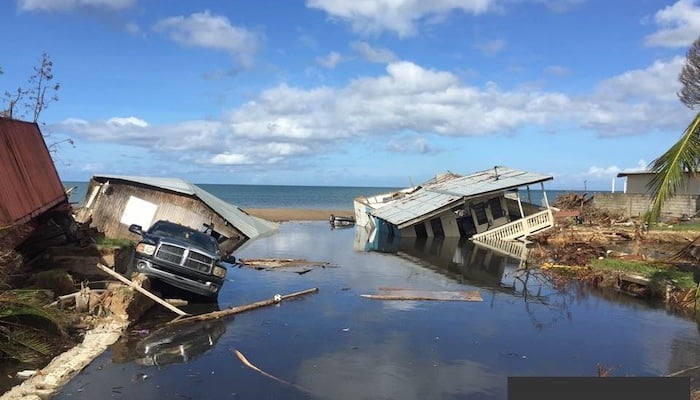
Hurricane Harvey
Hurricane Harvey made landfall in late August 2017 and went down as the second-most economically impactful tropical storm per NOAA in recorded history, dealing $133.8 billion in damage alone. Most of the economic impact was felt due to historic levels of flooding, with the greater Houston area experiencing 30–50 inches of rainfall, destroying 200,000 homes and businesses.
Hurricane Irma
After Harvey, Category 4 Hurricane Irma ($53.5 billion in damage) landed one week later, hitting the Florida coast. Per NOAA, 25% of all buildings were destroyed, with another 65% experiencing significant damage. Irma was also the second-longest sustained Category 5 hurricane behind Ivan in 2004.
Hurricane Maria
Finally, 2017 saw Hurricane Maria, which did not do as much economic damage as Harvey ($96.3 billion), but had a death toll greater than the 9/11 terrorist attacks. Maria made landfall just two weeks after Irma in the U.S. Virgin Islands and dropped 37 inches of rain in two days. The damage to Puerto Rico and the U.S. Virgin Islands is still being felt today, as the storm caused major damage and wiped out most of the islands’ infrastructure.